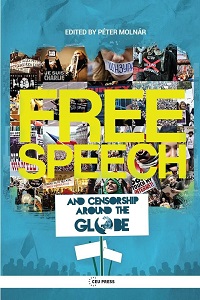
We kindly inform you that, as long as the subject affiliation of our 300.000+ articles is in progress, you might get unsufficient or no results on your third level or second level search. In this case, please broaden your search criteria.









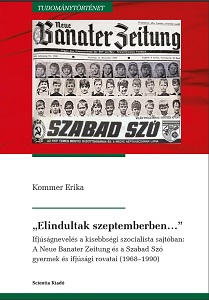
This book is a comparative analysis of the articles appeared in the daily newspapers Neue Banater Zeitung (published in German) and Szabad Szó (written in Hungarian) edited in Timişoara between 1968 and 1990. The main question of the research is: How and in what ways are children and youth addressed by these newspapers? Looking for a response, the book firstly outlines the socio-political relations in Romania during the period under review, mentioning the most important historical and cultural events of the German and Hungarian minorities. Another chapter presents the Neue Banater Zeitung, highlighting the personality of Editor-in-Chief Nikolaus Berwanger and key columns such as Pipatsch and Kulturbote. This is followed by the presentation of Szabad Szó and then the children’s, youth’s, and student’s pages and columns for correspondence of both newspapers. A separate chapter deals with the language of these columns, the “Newspeek” / “wooden language” as a tool of manipulation as well as the educational principles and the school model reflected in these newspapers of the communist Romania. The book also contains analysis of newspaper articles and interviews with journalists from the era: János Graur, Horst Samson, Ödön Józsa, Marius Koity, and Mária Pongrácz P.
More...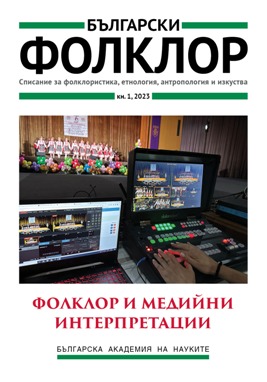
Internet memes are a basic representative of online folklore, which naturally arises and lives as part of virtual communication. Similar to political jokes, some of them comment on, gloss over, criticize and satirize political and social events, making them part of political participation and communication „from bellow“. The purpose of this case study is to use the example of the Slovak online platform Zomri [Die] to show how an amateur entertainment project, which is part of participatory online culture, became part of a societal discussion thanks to social network and popularity. Attention is paid to various actors (site admins, the public, politicians, media), the activities of those actors and the spillovers outside the internet environment. The study combines folkloristic theoretical starting points with approaches from media and pop culture studies. It is based on long-term online research of the platforms, its content, secondary activities and spillovers into other areas of the online and offline environment. It also builds on the analysis of media interviews and discussion with platform admins.
More...
The article presents a study of the “fake news” problem from an emic perspective, focusing on media practices. The study aims to place people as conscious and active subjects of cultural production and consumption at the analysis’s centre and present the problem through their actions, reactions and interpretations. Different cases of questionable content circulating through Bulgarian media space are analysed, and their functions and uses are outlined. Two main functions of fake news are specified: 1) as an aspect of popular culture and 2) as a genre of disinformation. The features of users’ reception and interpretation, the subversive impact of fake news in the media ecosystem and its usage in the so-called ‘information wars’ are examined in detail. The conclusions emphasise the role of humour and laughter as mechanisms of counteraction.
More...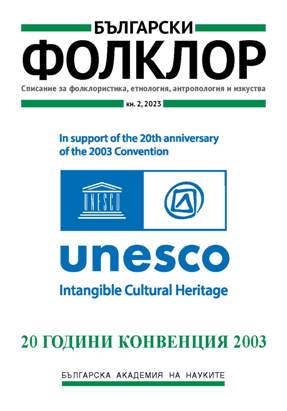
This article reviews two co-existing and mutually conflicting concepts in Bulgaria: the one of folklore and the policies of its conservation in the course of the 20th century, and the one of intangible cultural heritage (ICH) and the efforts for safeguarding it following the adoption, in 2003, of the relevant UNESCO Convention. A comparison is made between the folklore festivals, characteristic of the second half of the 20th century, and the Living Human Treasures Bulgaria National System, created in 2008 as one of the fundamental cultural policies of the Republic of Bulgaria in this sphere, which has resulted in the compiling of the National Representative List of the Intangible Cultural Heritage. Based on observations made during several of its consecutive iterations conducted so far, the article seeks to outline important aspects and issues of the rationalization of ICH and its safeguarding at the present moment. The author draws on her experience as a member of the team of scholars at the Institute of Ethnology and Folklore Studies with Ethnographic Museum of the Bulgarian Academy of Sciences (IEFSEM – BAS), which has been participating actively at expert level in the implementation of the 2003 Convention in Bulgaria.
More...
The 2003 Convention and Its Implementation in Bulgaria
More...
The 2003 Convention and Its Implementation in Bulgaria
More...
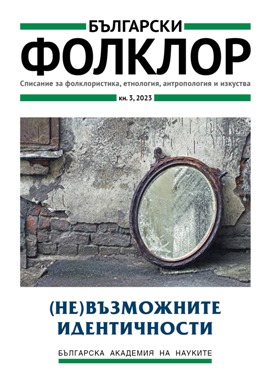
The political changes after 1989 in Bulgaria and the country’s difficult economic transition, temporarily led to a decline in patriotic feelings among the Bulgarian people. With few exceptions, such as Bulgaria's triumphant performance at the 1994 World Cup, which led to unprecedented national pride, the idea of belonging and unity began to dissolve in the harsh and uncertain conditions of the transition from socialism to a market economy. This led to a deterioration of relations in Bulgarian society, a sharp revision of values, a decrease in tolerance, and the entering into everyday life of the so-called language of hatred. Political parties were created which, under the guise of patriotism, openly promoted more radical sentiments toward various types of minorities. An increase in domestic crime at the time proved to be a fertile ground for such rhetoric. The fact that from the beginning of the new millennium until now, some Bulgarians have been invariably supporting nationalist parties, shows that these political formations are an expression of permanently present sentiments in the Bulgarian society. The current text will focus on nationalist manifestations towards the second-largest ethnic minority in the country – the Roma. For this purpose, specific events will be examined and analysed, and an attempt will be made to provide answers to several questions such as: What is the role of the Bulgarian minorities in these nationalist attitudes? Is it possible to build an identity based on the rejection of the other, and what are the manifestations of this rejection? How do such manifestations of intolerance and confrontation reflect on the identity of the minority itself? Who benefits from this rhetoric, and what are its consequences for the Bulgarian society?
More...
The article proposes to refine the periodisation of Russian and Russian-speaking immigration in Bulgaria. It examines the necessary context, describing changes in motivations and identity projects of these groups from (relatively) 2013 to 2023. The text outlines the specific tool - the blog, reinvented in a modern context – the text highlights the differences between it within the visual platform Instagram and its classical visual version. Thus, some of the main features of Russian-speaking users’ own online representations are brought to the fore through the implicit and (counterintuitively) explicit discourses of Russian-speaking users. They focus the analysis on their identifications and the specifics of adaptation and its dynamics, maintaining a sense of community but also accumulating social capital that directly reflects their plans and strategies for the present and future.
More...
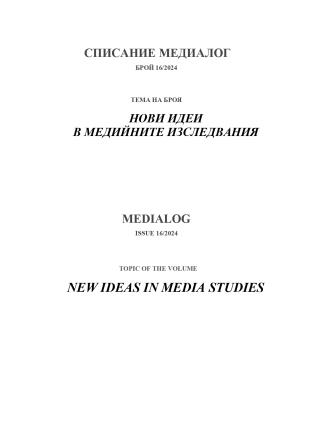
This review presents Martin Marinos's Free to Hate: How Media Liberalization Enabled Right-Wing Populism in Post-1989 Bulgaria (University of Illinois Press, 2023). Marinos's in-depth analysis reveals the close link between the media and the rise of right-wing populism in post-socialist Bulgaria. Marinos focuses on the connections between phenomena such as neoliberalism, racism, populism, and media commercialization.
More...